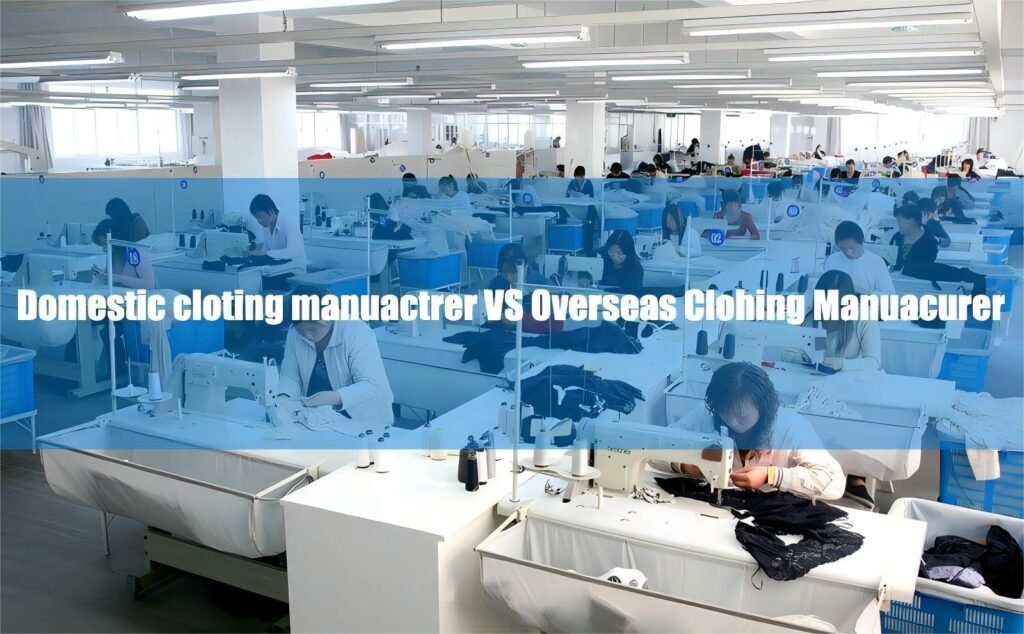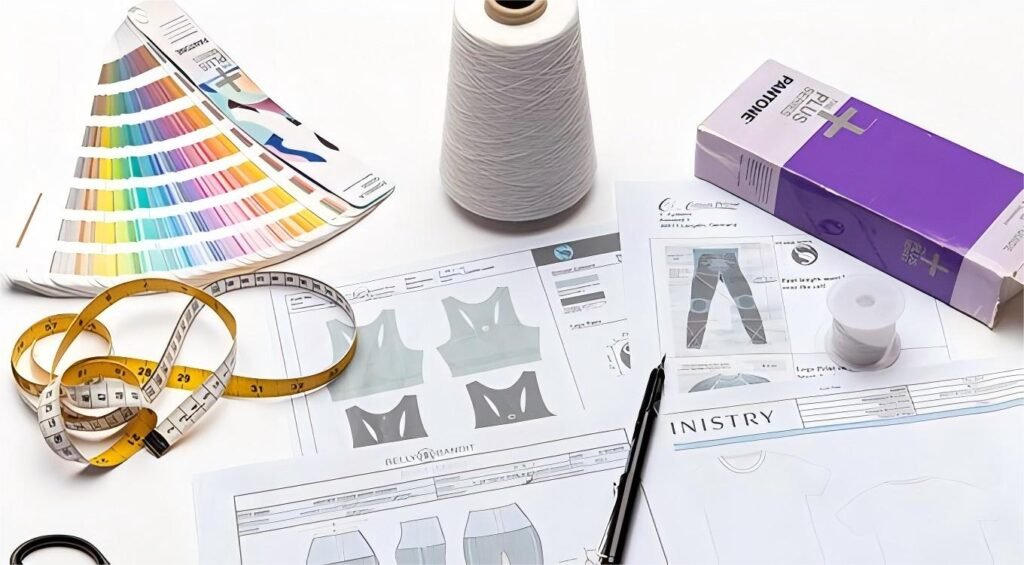No products in the cart.
Custom Yoga Pants
Bulk Clothing Wholesale: Affordable Fashion in Large Quantities for Retailers
Introduction to Bulk Clothing Wholesale
Bulk clothing wholesale refers to the practice of purchasing large quantities of clothing items from manufacturers or suppliers at discounted prices. This business model is particularly popular among retailers who want to offer a wide range of affordable fashion options to their customers. By buying in bulk, retailers can take advantage of lower prices per unit, allowing them to maximize their profit margins.
Benefits of Buying Clothing in Large Quantities
There are several benefits to buying clothing in large quantities for retailers. Firstly, it allows them to offer a diverse range of products to their customers. By purchasing in bulk, retailers can stock up on a variety of styles, sizes, and colors, ensuring that they have something for everyone. This not only attracts a wider customer base but also increases the chances of making a sale.
Secondly, buying in bulk helps retailers save money. When purchasing clothing items in large quantities, suppliers often offer discounted prices per unit. This means that retailers can buy more products for less money, increasing their profit margins. Additionally, buying in bulk reduces shipping costs as multiple items can be shipped together, saving on transportation expenses.
Furthermore, buying in bulk allows retailers to stay ahead of the competition. By having a wide range of products readily available, retailers can respond quickly to changing fashion trends and customer demands. This flexibility gives them a competitive edge in the market, attracting more customers and increasing sales.

How to Find Reliable Bulk Clothing Suppliers
Finding reliable bulk clothing suppliers is crucial for retailers who want to ensure the quality and reliability of their products. Here are some tips for finding trustworthy suppliers:
1. Research and compare: Start by researching different suppliers and comparing their offerings. Look for suppliers with a good reputation, positive customer reviews, and a wide range of products.
2. Attend trade shows: Trade shows are a great way to connect with suppliers and see their products firsthand. Attend industry-specific trade shows to find potential suppliers and establish relationships with them.
3. Ask for recommendations: Reach out to other retailers or industry professionals for recommendations on reliable bulk clothing suppliers. Their firsthand experiences can provide valuable insights and help you make an informed decision.
4. Request samples: Before committing to a supplier, request samples of their products to assess their quality. This will give you an idea of the materials used, the craftsmanship, and the overall durability of the clothing items.
5. Check certifications: Ensure that the supplier follows ethical and sustainable practices by checking for certifications such as Fair Trade or organic certifications. This will help you align your business with suppliers who share your values.
Understanding the Wholesale Pricing Structure
Understanding the wholesale pricing structure is essential for retailers to make informed purchasing decisions. Wholesale prices are typically lower than retail prices as they are designed to accommodate bulk purchases. The pricing structure may vary depending on factors such as the quantity ordered, the type of clothing item, and the supplier’s pricing policies.
Most suppliers offer tiered pricing, where the price per unit decreases as the quantity ordered increases. For example, a supplier may offer a price of $10 per unit for an order of 100 pieces, but reduce it to $8 per unit for an order of 500 pieces. This incentivizes retailers to buy in larger quantities to take advantage of the lower prices.
It’s important for retailers to carefully analyze the pricing structure and calculate the potential profit margins before making a purchase. Consider factors such as shipping costs, storage expenses, and potential markdowns when determining the final retail price of the clothing items.

Popular Fashion Trends in Bulk Clothing Wholesale
Bulk clothing wholesale allows retailers to tap into popular fashion trends and offer them to their customers at affordable prices. Here are some popular fashion trends in bulk clothing wholesale:
1. Athleisure: Athleisure wear, which combines athletic and leisurewear, has gained immense popularity in recent years. Retailers can stock up on comfortable and stylish activewear, including leggings, sports bras, and hoodies, to cater to the growing demand for athleisure.
2. Sustainable fashion: With increasing awareness about environmental issues, sustainable fashion has become a significant trend. Retailers can source clothing items made from organic or recycled materials, promoting eco-friendly practices and attracting environmentally conscious customers.
3. Minimalism: Minimalist fashion, characterized by clean lines, neutral colors, and simple silhouettes, has become a timeless trend. Retailers can stock up on basic wardrobe staples such as plain t-shirts, classic jeans, and versatile dresses to cater to customers who prefer a minimalist aesthetic.
4. Bold prints and patterns: Vibrant prints and patterns are always in style. Retailers can offer a wide range of clothing items featuring bold prints such as floral, animal, or geometric patterns to cater to customers who want to make a statement with their fashion choices.
5. Gender-neutral fashion: Gender-neutral fashion has gained traction in recent years as people embrace inclusivity and diversity. Retailers can stock up on clothing items that are not limited to traditional gender norms, allowing customers to express themselves freely.
Tips for Successful Bulk Clothing Purchasing
To ensure successful bulk clothing purchasing, retailers should consider the following tips:
1. Plan ahead: Before making a purchase, retailers should analyze their target market, identify popular fashion trends, and determine the quantity and types of clothing items they need. This will help them make informed decisions and avoid overstocking or understocking.
2. Establish relationships with suppliers: Building strong relationships with suppliers is crucial for successful bulk clothing purchasing. Regular communication, timely payments, and mutual trust can lead to better deals, priority access to new products, and improved customer service.
3. Negotiate prices: Don’t be afraid to negotiate prices with suppliers. Buying in bulk gives retailers leverage to negotiate better deals and lower prices. However, it’s important to strike a balance between negotiating for lower prices and maintaining a good relationship with the supplier.
4. Consider storage and inventory management: Before purchasing in bulk, retailers should assess their storage capacity and inventory management systems. Ensure that you have enough space to store the clothing items and implement efficient inventory management practices to avoid stockouts or excess inventory.
5. Stay updated with fashion trends: Fashion trends change rapidly, so it’s important for retailers to stay updated with the latest styles and designs. Regularly research fashion magazines, attend fashion shows, and follow influencers and fashion bloggers to identify emerging trends and make informed purchasing decisions.

Quality Control Measures in Bulk Clothing Wholesale
Maintaining quality control is crucial in bulk clothing wholesale to ensure customer satisfaction and protect the retailer’s reputation. Here are some quality control measures that retailers should consider:
1. Inspect samples: Before placing a bulk order, retailers should thoroughly inspect samples of the clothing items to assess their quality. Look for any defects, such as loose threads, uneven stitching, or fabric imperfections. Reject any samples that do not meet your quality standards.
2. Set quality standards: Clearly define your quality standards and communicate them to the supplier. This includes specifications for materials, stitching, sizing, and finishing. Regularly review and update these standards to ensure consistency in the quality of the clothing items.
3. Conduct regular inspections: Regularly inspect the clothing items upon delivery to ensure that they meet your quality standards. This can involve checking for defects, measuring dimensions, and assessing the overall appearance and feel of the products.
4. Communicate with the supplier: Maintain open lines of communication with the supplier to address any quality issues promptly. Provide feedback on any defects or inconsistencies and work together to find solutions. A good supplier will be responsive and willing to rectify any quality issues.
5. Implement a return policy: Establish a clear return policy for defective or substandard clothing items. This will allow customers to return or exchange products that do not meet their expectations, ensuring customer satisfaction and maintaining a positive reputation.
Sustainable and Ethical Practices in Wholesale Fashion
As consumers become more conscious of the environmental and social impact of the fashion industry, sustainable and ethical practices have become increasingly important in wholesale fashion. Retailers can align their business with these values by sourcing clothing items from suppliers who prioritize sustainability and ethical practices. Here are some sustainable and ethical practices to look for:
1. Use of eco-friendly materials: Look for suppliers who use organic, recycled, or sustainable materials in their clothing items. This reduces the environmental impact of the fashion industry by minimizing the use of harmful chemicals and reducing waste.
2. Fair trade certification: Choose suppliers who have fair trade certifications, ensuring that workers involved in the production process are paid fair wages and work in safe conditions. Fair trade certifications also promote transparency and accountability in the supply chain.
3. Ethical manufacturing practices: Ensure that the suppliers you work with follow ethical manufacturing practices. This includes fair treatment of workers, adherence to labor laws, and responsible waste management.
4. Reduce packaging waste: Encourage suppliers to minimize packaging waste by using eco-friendly materials and reducing unnecessary packaging. This helps reduce the environmental impact of the fashion industry and aligns with sustainable practices.
5. Transparent supply chain: Choose suppliers who provide transparency in their supply chain, allowing you to trace the origin of the clothing items and ensure that they are produced ethically and sustainably.
Customization and Branding Options for Retailers
Bulk clothing wholesale offers retailers the opportunity to customize and brand clothing items, allowing them to create a unique identity and stand out in the market. Here are some customization and branding options for retailers:
1. Private labeling: Private labeling involves adding your own brand name, logo, and labels to the clothing items. This creates a sense of exclusivity and allows retailers to build brand recognition and loyalty.
2. Custom designs: Work with suppliers who offer custom design options, allowing you to create unique clothing items tailored to your target market. This can involve selecting specific fabrics, colors, patterns, or adding custom embellishments.
3. Custom packaging: Customize the packaging of the clothing items to reflect your brand identity. This can include branded boxes, tissue paper, or personalized thank-you notes. Custom packaging enhances the overall customer experience and reinforces your brand image.
4. Hang tags and labels: Add hang tags and labels with your brand name, logo, and product information to the clothing items. This helps customers identify your brand and provides important details about the product.
5. Collaborations and partnerships: Consider collaborating with influencers, designers, or other brands to create limited-edition collections or exclusive collaborations. This can generate buzz and attract new customers to your brand.

Managing Inventory and Storage for Bulk Clothing
Managing inventory and storage is crucial for retailers engaged in bulk clothing wholesale. Here are some tips for effective inventory and storage management:
1. Implement inventory management software: Use inventory management software to track and manage your inventory. This allows you to monitor stock levels, track sales, and identify popular products. It also helps streamline the ordering process and avoid stockouts or excess inventory.
2. Categorize and organize inventory: Categorize your inventory based on factors such as style, size, color, and season. This makes it easier to locate specific items and ensures efficient storage and retrieval.
3. Optimize storage space: Maximize your storage space by utilizing vertical storage solutions such as shelves or racks. Consider investing in storage systems that allow for easy access and efficient organization of clothing items.
4. Rotate inventory: Regularly rotate your inventory to ensure that older stock is sold before newer stock. This helps prevent items from becoming outdated or unsellable.
5. Conduct regular stock checks: Regularly conduct stock checks to identify any discrepancies between your inventory records and the actual stock on hand. This helps prevent inventory shrinkage and ensures accurate stock levels.
Marketing Strategies for Selling Bulk Clothing
Effective marketing strategies are essential for retailers engaged in bulk clothing wholesale. Here are some strategies to consider:
1. Social media marketing: Utilize social media platforms such as Instagram, Facebook, and Pinterest to showcase your clothing items and engage with your target audience. Create visually appealing content, collaborate with influencers, and run targeted ads to increase brand visibility and drive sales.
2. Email marketing: Build an email list of customers and send regular newsletters or promotional emails to keep them informed about new arrivals, sales, and exclusive offers. Personalize your emails to make them more engaging and relevant to each customer.
3. Influencer collaborations: Collaborate with influencers or fashion bloggers who align with your brand values and target audience. This can involve sponsored posts, product reviews, or giveaways, which can help increase brand awareness and drive traffic to your online or physical store.
4. Online marketplaces: Consider selling your bulk clothing items on popular online marketplaces such as Amazon, eBay, or Etsy. These platforms have a large customer base and can help you reach a wider audience.
5. Loyalty programs and discounts: Implement loyalty programs or offer discounts to encourage repeat purchases and customer loyalty. This can include offering exclusive discounts to loyal customers, providing free shipping, or offering rewards for referrals.

Case Studies: Successful Retailers in Bulk Clothing Wholesale
To illustrate the success of retailers in bulk clothing wholesale, let’s look at two case studies:
1. Fashion Nova: Fashion Nova is a popular online retailer that offers trendy and affordable clothing items. They have built a strong brand presence through social media marketing, collaborating with influencers, and offering a wide range of clothing options. By buying in bulk and leveraging their strong relationships with suppliers, Fashion Nova is able to offer competitive prices to their customers while maintaining high-quality standards.
2. H&M: H&M is a global fashion retailer known for its fast-fashion business model. They source clothing items in large quantities from suppliers worldwide, allowing them to offer a wide range of affordable fashion options. H&M focuses on sustainability and ethical practices by implementing recycling programs, using organic materials, and promoting fair trade. Their successful bulk clothing wholesale strategy has helped them become one of the largest fashion retailers in the world.
In conclusion, bulk clothing wholesale offers retailers the opportunity to provide affordable fashion in large quantities to their customers. By buying in bulk, retailers can take advantage of lower prices per unit, offer a diverse range of products, and stay ahead of the competition. Finding reliable suppliers, understanding the pricing structure, and implementing quality control measures are crucial for successful bulk clothing purchasing. Retailers can also align their business with sustainable and ethical practices, customize and brand clothing items, and effectively manage inventory and storage. By implementing effective marketing strategies and learning from successful case studies, retailers can thrive in the bulk clothing wholesale industry.
